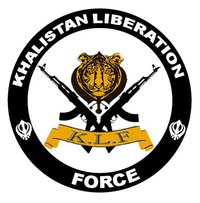NIA Charges Nine BKI and KTF Members
Context :
Three “listed individual terrorists” and six other people connected to the outlawed terrorist organizations Babbar Khalsa International (BKI) and Khalistan Tiger Force (KTF) were named in a chargesheet submitted by the NIA on Saturday.
What do we Know about BKI and KTF groups?
Babbar Khalsa International

- Formation: In the wake of disputes with the Sikh Nirankari sect, BKI was founded in 1978. It began as a militant group to establish Khalistan, an independent Sikh state, in Punjab, India. This organisation was founded by Talwinder Singh Parmar and Sukhdev Singh Babbar
- Activities: BKI has taken part in violent operations to further its objectives. It has conducted out violent assaults, bombings, and assassinations against people and organizations it believes are opposed to the establishment of Khalistan.
- Punjab Insurgency: The Punjab insurgency, which involved an armed battle for Khalistan, took place in the 1980s, and BKI played a significant role in it. Significant bloodshed and instability were caused by the insurgency in the area.
- The bombing of Air India Flight 182: On June 23, 1985, BKI masterminded the bombing of Air India Flight 182 while it was flying from Canada to India, becoming one of its most notorious acts. 329 persons were killed in the explosion, the majority of whom were Canadians. This episode is regarded as the deadliest mass murder case in Canadian history.
- Bombing at Narita International Airport: On the same day that Air India Flight 182 was bombed, BKI attempted to destroy a second Air India flight at the Japanese airport. No one was hurt, though, when the second bombing was stopped.
- International Presence: BKI’s operations are not just in India; they are also present abroad. Other nations where the group has a presence include Pakistan, North America, and Europe, especially Scandinavia. It has utilized these areas for fundraising, hiring, and operational planning.
- Decline: Influence declined in the 1990s as a result of the deaths of several of BKI’s senior leaders in clashes with Indian authorities. These interactions damaged the organization’s capabilities and organizational structure.
- International Terrorist Designation: Several governments and international organizations, including the United States, Canada, the United Kingdom, the European Union, Japan, Malaysia, and India, have formally designated BKI as a terrorist organization. This classification places limitations on its operations and resources and exposes its members to legal repercussions.
Bhindranwale Tiger Force of Khalistan

- Formation: Established in 1984, the Bhindranwale Tiger Force of Khalistan (BTFK) was founded by its name. It was given that name in honour of Jarnail Singh Bhindranwale, a well-known Sikh preacher and leader who pushed for the establishment of Khalistan, an independent Sikh state. Gurbachan Singh Manochahal established the organization.
- Goal: The main goal of the BTFK was to separate Khalistan, the homeland of the Sikhs, from India. The idea that Sikhs were being discriminated against based on religion, politics, and economics was at the heart of the demand for Khalistan.
- Peak Membership: The BTFK reportedly had 500 or more members at its height. It was one of several significant separatist groups active in the Khalistan cause during the Punjab uprising.
- Geographic Focus: The Tarn Taran Sahib district of Punjab, which turned into the focus of bloodshed during the Punjab insurgency, saw a lot of influence from the BTFK. The activities of the group were centred in this area.
- Violence and Insurgency: Similar to other militant organisations in the Khalistan movement, the BTFK employed violence and insurgency strategies to further its goals. This included assaults on Indian security personnel, government buildings, and those thought to be in support of Khalistan.
- Leader’s Death and Impact: The founder of the BTFK, Gurbachan Singh Manochahal, was murdered in a 1993 encounter with Indian security forces. The cohesiveness and efficiency of the group were significantly impacted by his passing.
- Disbanding: Following the passing of Gurbachan Singh Manochahal, the BTFK experienced internal strife and splintering. As a result, the group appeared to split apart or become divided into factions, losing some of its previous power and influence.
- Designation as a Major Militant Group: The Indian government designated the BTFK as one of the Khalistan movement’s four “major militant groups” in 1995. This label emphasized its importance and its actions at the time.
- Government Response: To quell the actions of militant organizations like the BTFK, the Indian government launched counter-insurgency operations in response to the Punjab insurgency. These operations frequently resulted in run-ins and clashes with the insurgents.
How is India handling domestic terrorism?
- Amendment of The Unlawful Activities Prevention Act (UAPA) 2019:
- The 1967-enacted UAPA was revised in August 2019 to make it possible to designate people as terrorists.
- This amendment gives the government the authority to track down and punish those who engage in terrorist activity.
- Agreement for the Exchange of Terrorism Screening Information between India and the US:
- In 2016, India and the United States inked a contract for the exchange of terrorism screening information.
- To successfully combat terrorism, this agreement aims to strengthen security measures and communicate pertinent intelligence between the two nations.
- The National Investigation Agency (NIA):
- The National Investigation Agency (NIA) is the main law enforcement investigative organization tasked with combating terrorism in India at the level of the national government.
- Investigation and prosecution of terrorism-related crimes across the nation is the primary responsibility of the NIA.
- Modifications made to the NIA Act of 2008
- The National Investigation Agency (NIA) Act of 2008 was amended by the Indian Parliament.
- These changes give the NIA the authority to look into terrorism cases that involve Indian citizens abroad or have global repercussions.
- The NIA is now able to investigate and handle terrorism-related matters outside of the boundaries of India thanks to the expansion of its authority.
- Federal Contingency Force: National Security Guard (NSG)
- The designated federal contingency force responsible for a global response to terrorism and other security threats is the National Security Guard (NSG).
- The NSG is a top-tier special operations group that has been specially trained and outfitted for high-stakes counterterrorism operations.
- State anti-terrorism squad formation
- To ensure a quick first response to terrorist attacks within their respective states after 2008, state antiterrorism squads were established.
- These troops are particularly trained and outfitted to respond to terrorist threats and assaults with speed and effectiveness.
- The creation of these squads was intended to improve the nation’s overall counterterrorism capabilities.




